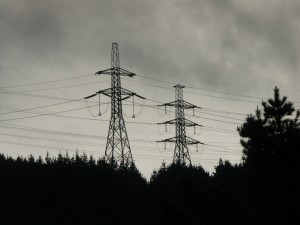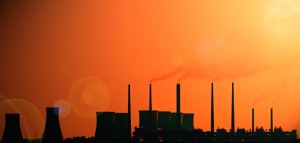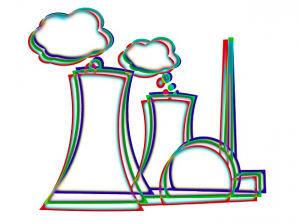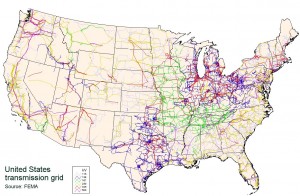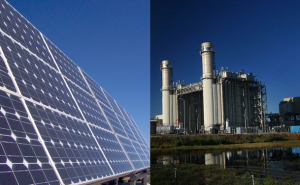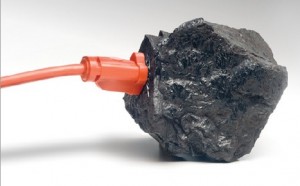37 item(s) were returned.
Chair, Energy & Commerce Subcommittee on Environment & Climate Change, U.S. House of Representatives
Co-Chair, Sustainable Energy & Environment Coalition
On a hot day in August 2003, a stretched transmission line tripped after dipping into an overgrown tree in Ohio. Soon after, multiple transmission lines nearby also tripped beginning what would become the second-largest blackout at that time in history, impacting eight Northeastern states and Southern Canada. Since this massive blackout and concerns about grid reliability, power generation in the United States has changed dramatically both in form and quantity. In 2005, Congress recognized the need for mandatory grid reliability standards and expanded the Federal Energy Regulatory Commission’s (FERC) authority to regulate the bulk power system. However, despite FERC’s efforts… [more]
View InsightFounder and CEO
SMART WATER, SMART CITY LLC
Around the country, a new conversation is emerging among municipal leaders and utility executives as they explore the energy/water nexus. While Senator Murkowski started the discussion at the federal level in 2014, local leaders are just beginning to question the impact of the energy/water nexus. The water/energy nexus deals with the need for water to produce energy, and for energy to treat and distribute clean water. Water infrastructure is an essential public service in any city and is intrinsically linked to energy. Smart technologies and smart strategies for water and energy utilities are needed to address conservation challenges and form… [more]
View InsightExecutive Director
Environmental and Energy Study Institute
According to the EPA, its proposed Clean Power Plan (CPP) would lead to a 30 percent cut in carbon emissions from the power sector by 2030, compared to 2005 levels. The CPP sets a customized goal for each state, which takes into account its existing policies and the unique structure of its energy system. The current draft regulation gives states interim goals for 2020-29, and a final target for 2030. The EPA proposal offers a great deal of flexibility for states to choose how best to achieve these emissions reduction goals. The CPP suggests four “building blocks” that states can… [more]
View InsightPresident
Kadak Associates, Inc.
Without significant gains in storage technology, electric generation from solar and wind will not meet the world’s energy needs. Nuclear power, however, can deliver electric power in a sufficiently safe, economical and secure manner to supplement supply from other carbon-free sources. Despite this, there remain major objections to the safety, cost, waste management and proliferation risk of nuclear power, which I’ll seek to address here. Safety There have been three serious accidents that challenged the safety record of nuclear power: the Three Mile Island (TMI), Chernobyl, and the tsunami-induced Fukushima accident. In all these accidents there were no immediate public… [more]
View InsightExecutive Director
Pace Energy and Climate Center
This discussion is presented in conjunction with the closing keynote at the Association for Environmental Studies and Sciences 2014 Conference. Cost-effective and profitable energy efficiency technologies and services, and renewable energy generation alternatives are available today to end GHG emissions from the electric utility sector entirely. Traditional cost-of-service regulation rewards capital investments more than the provision of value, punishes innovation and efficiency, and treats customers as “ratepayers” with few choices and little clout. Today’s electric utilities are not well prepared to make the business model changes required to become truly sustainable. Three key strategies map a path forward. First, cost-of-service… [more]
View InsightMember
U.S. House of Representatives
As Chairman of the House Subcommittee on Energy and Power, I’m continuing the fight against President Obama’s Environmental Protection Agency’s (EPA) overregulation of our nation’s power plants without any regard to the consequences for our economy and consumers. This week, the EPA is expected to release its proposed rule regulating carbon dioxide emissions from existing and modified electricity power plants. This effort is certain to result in a de facto cap and trade program, which Congress most recently rejected in 2009. This regulation follows the proposed rule on new power plants, which essentially makes it illegal to build a power… [more]
View InsightOn April 30th, OurEnergyPolicy.org and The University of Texas at Austin co-hosted “American Perspectives on Energy Efficiency,” a panel discussion about energy efficiency at The National Press Club. The panel of thought-leaders provided insight into energy efficiency policy issues and explored the results of two recent sister surveys that reveal Americans’ and energy professionals’ perspectives on energy efficiency. Please see below for an abridged version of the transcript and a full video recording of the event. You can view or download the full transcript here. Opening remarks: Bill Squadron, President, OurEnergyPolicy.org Presentation of survey results: Sheril Kirshenbaum, Director of The… [more]
View InsightLead Communications Consultant
Duke Energy
The role of natural gas in a clean energy future has been widely debated due to concerns over life-cycle carbon emissions and perceptions that relying on natural gas as a “bridge fuel” is short-sighted and reduces investment in clean energy. A study published in the journal Science concluded methane leaks from the production and piping of natural gas were underestimated and could be large enough to undermine the carbon reduction benefits compared to coal. Recent utility developments have highlighted the competition between renewables and natural gas: Faced with a capacity shortage as a result of the retirement of the 2,200… [more]
View InsightPrincipal
Brinch Consulting
Changes in the electric power industry are well underway in many states across the U.S. As a result of numerous drivers – including the need to address climate change, natural gas prices, retiring coal plants, the pace of grid modernization – many electric utilities are changing the way they interact with their customers and considering how to adapt their business and planning models. Third party vendors are marketing new energy services (view site to know more about the marketing firm that is helping them) and regulators, legislators, and consumer advocates are evaluating the existing policy landscape to consider ways to… [more]
View InsightThe U.S. Environmental Protection Agency (EPA) released draft rules on September 20th, to limit carbon emissions from new coal power plants. The proposed rules are part of President Obama’s broader Climate Action Plan aimed at combating climate change and improving public health, according to the EPA. Under the rules, new coal-fired power plants would be limited to 1,100 pounds of CO2 per megawatt-hour, or could opt to meet stricter average emissions limits that grant additional operational flexibility. The rules also would require new plants to implement partial carbon capture and storage (CCS) technology. Critics of the proposed rules argue that… [more]
View Insight